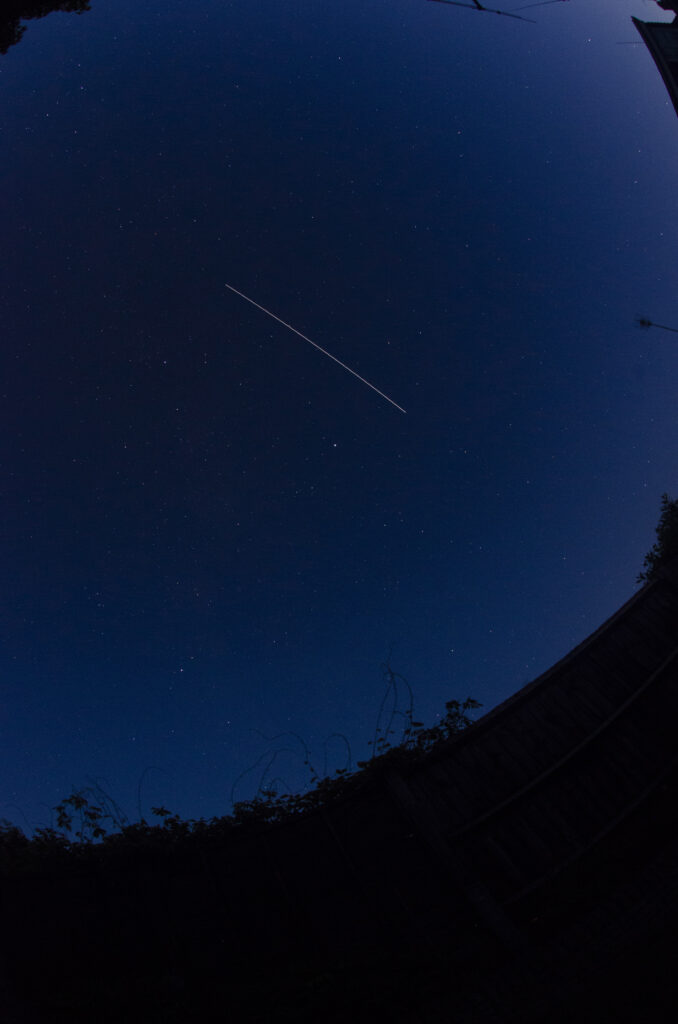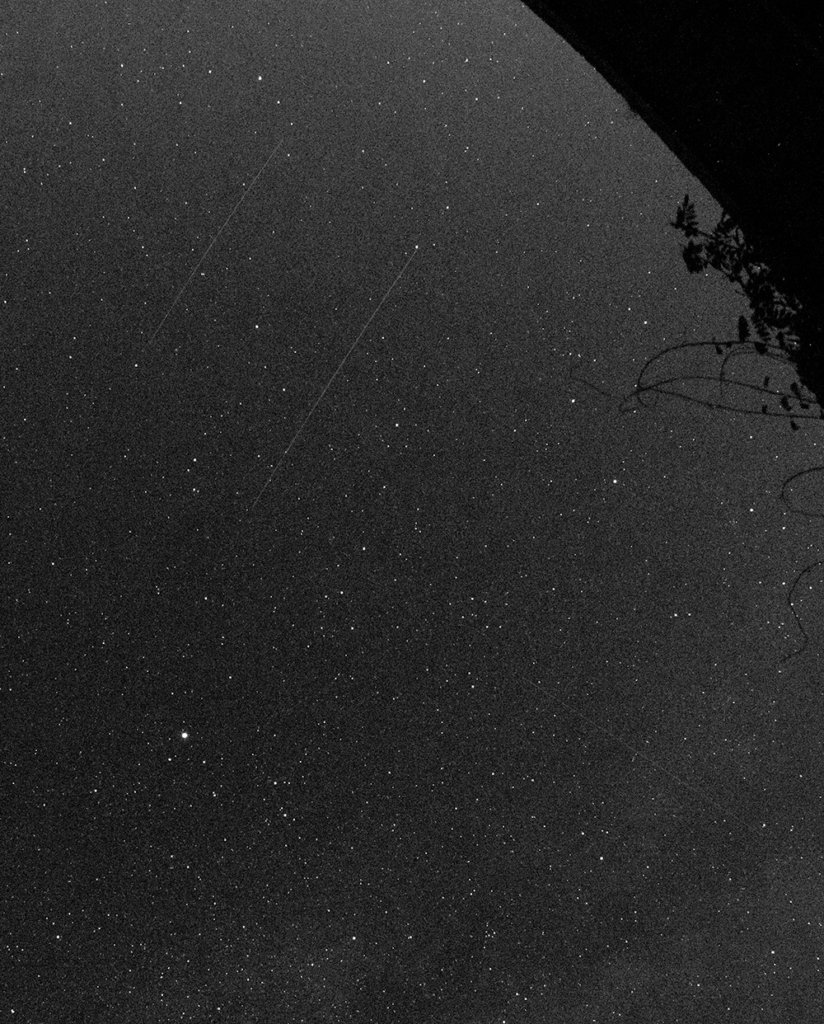As we head towards August, the nights start to get longer again and it’s darker at a reasonable hour. Take a few minutes before bed to pop outside and just look up – you’ll be amazed at how much you can see, without the aid of any expensive equipment.
Allow your eyes to become accustomed to the dark, and as you do, more and more stars will become visible. If you have dark enough skies, you may even see the Milky Way – millions of stars that help to form our own galaxy.
So what can you see?
Apart from the millions of stars there are plenty more objects to be seen! But how do you tell what you are looking at?
If it’s moving and it’s flashing – it’s an aeroplane or helicopter…
If it’s moving and the light is constant, it’s probably a satellite – including possibly the International Space Station…
If it’s fast moving, and just a brief flash – it’s probably a meteor , a shooting star. However some satellites tumble in their orbit, and they can occasionally appear to give a very brief bright flash. Often this will repeat further along its orbit – definitely not a meteor then!
Let’s look at some of these in more detail…
Stars
Amongst the millions of stars out there, some are more prominent than others – either through their brightness eg: Vega, Deneb and Altair (an asterism known as the Summer Triangle) or through the constellations they make eg Leo, Cassiopeia, Cygnus.
A good app on your phone or tablet (Sky Safari, Night Sky, Sky Guide etc) will let you explore the night sky and help you identify the constellations you’re looking at.
Meteors
The biggest of the meteor showers occurs in August – the Perseid shower. This takes place between the 17 July and 24 August, and meteors can be seen any time after sunset, although the peak is between midnight and 5am. For all the details about this meteor shower, visit this website.
Satellites
Satellites appear as small pinpoints of light, moving across the sky, usually north/south or from west to east. The N/S satellites are ‘polar orbiting’ meaning their orbit takes them over the top of the poles – this means they’ll pass over a country in the morning and again approximately 12 hours later. The first time if they’re travelling from the south to the north, then in the afternoon they will be travelling from the north to the south.
The ISS and the satellites in the StarLink series all travel from the west to the east. Often you can see several of the StarLink satellites passing in formation. For more detail about the StarLink satellites, be sure to read my post on StarLink.
Satellites can only be seen because they reflect sunlight off the solar panels and body of the satellite. Often they will appear to fade out overhead – this is as the satellite passes into the shadow of the earth and out of the sunlight.
Photographing the night sky
If you’d like to try photographing the night sky be sure to read my tips here. The key is patience, a tripod, and a lot of luck!
Sky Glow
Locally, we are fortunate that the streetlights are turned off at 1am (mainly to save the council money!) – this has the effect of reducing. the amount of glow from local lights. There is currently a proposal to build a very large 24/7/365 warehouse operation, less than a mile from me. If this goes ahead, the skyglow produced will destroy any opportunity I will have for astronomy. I will be objecting to the development and if you see any similar development near you – please object!




